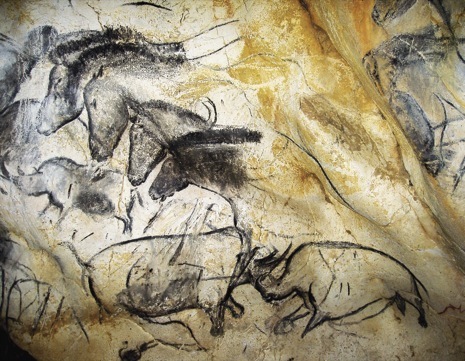Imagine Zero
 Francis Bacon famously said, "I'm optimistic about nothing." I believe that was his clever way of confronting the possibilities that remain in a world that is psychotic. The author and environmentalist Derrick Jensen has said; "For us to maintain our way of living, we must tell lies to each other and especially to ourselves. The lies are necessary because, without them, many deplorable acts would become impossibilities." I believe that art can be a means of cutting through the lies we tell ourselves and an opportunity to confront the deeper meanings of our own existence. This can be conceived in a multitude of forms from humor to horror, but anything in art that fails to "deepen the mystery" is a lessor form and we should confront it as such.
We are quite literally teetering on the brink of self-annihilation in this current time of our human history. I don't believe I'm overstating that or playing to melodrama. Art has always lived at a primal core of our evolution and by understanding its role and embracing its importance, perhaps we can participate in a different kind of evolutionary leap than the one we seem to be headed for. I do not mean this in some utopian fantasy, but in terms of active engagement. Identifying through our most profound and brave artistic expressions that which is meaningful and destructive to us, is a way of overcoming the crushing depression of multiple end-time scenarios. I call it imagining zero because zero as a conceptual idea becomes a metaphor for our own unimaginable potential.
Francis Bacon famously said, "I'm optimistic about nothing." I believe that was his clever way of confronting the possibilities that remain in a world that is psychotic. The author and environmentalist Derrick Jensen has said; "For us to maintain our way of living, we must tell lies to each other and especially to ourselves. The lies are necessary because, without them, many deplorable acts would become impossibilities." I believe that art can be a means of cutting through the lies we tell ourselves and an opportunity to confront the deeper meanings of our own existence. This can be conceived in a multitude of forms from humor to horror, but anything in art that fails to "deepen the mystery" is a lessor form and we should confront it as such.
We are quite literally teetering on the brink of self-annihilation in this current time of our human history. I don't believe I'm overstating that or playing to melodrama. Art has always lived at a primal core of our evolution and by understanding its role and embracing its importance, perhaps we can participate in a different kind of evolutionary leap than the one we seem to be headed for. I do not mean this in some utopian fantasy, but in terms of active engagement. Identifying through our most profound and brave artistic expressions that which is meaningful and destructive to us, is a way of overcoming the crushing depression of multiple end-time scenarios. I call it imagining zero because zero as a conceptual idea becomes a metaphor for our own unimaginable potential.
Last week I saw the film The Cave of Forgotten Dreams by Werner Herzog. The film was likely the first and last film footage ever to be shot in the caves of Chauvet in France. These caves were sealed some twenty thousand years ago by a land slide, perfectly preserving the oldest known art work on the planet. Ancient drawings spanning five thousand years time remained largely unchanged in their technique and content. Made thirty-five thousand years ago when enormous ice sheets covered the surrounding mountains in three thousand meters of snow and ice, they are a testament to how art literally changed human beings. At the time homo sapiens were occupying the very same region as Neanderthals (Homo sapiens neanderthalensis) a preceding branch of the human species. Although Neanderthal jewelry and some fragments of masks and pigment residue have been discovered, no other significant art has been found. Of course, we know, Neanderthals did no survive till today. Something profound happened in our evolutionary process thirty-five thousand years ago in the caves of southern France that changed the course of human evolution. It may have contributed to our dominion over the Neanderthals or at the very least our survival in opposition to their disappearance. We began to express ourselves by framing outside of objects, our experiences and the environment in which we lived. Why did we begin to draw on the wall? What was the significance of creating drawings in a dark cave that could only be witnessed by torch light? The lions, rhinoceros and antelope that were drawn with an eerie life-like realism and deliberately worked with the contours of the cave walls to create a three-dimensional illusion were our first forays into framing our existence as something outside our tactile experiences. Their dreams were reimagined as charcoal drawings sketched inside the dark caves in order to better comprehend the meaning of existence and their seat within the world.
Today we are able to reimagine our dreams in an almost infinite array of mediums from movies to video games, and we have achieved the capacity to literally re-shape our world. If we can look more closely at the world and more precisely examine what artists are expressing we have the capacity to rediscover what started us on this amazing journey some thirty-five thousand years ago, and with it, perhaps imagine a radical new shift in our species.
In the coming weeks I'll be working to expand Imagine Zero and I encourage others to more robustly participate in both commentary and offer their writing. I'm interested in this being a location for multiple perspectives and multiple viewpoints on art and its meaningfulness in today's world. If you're interested in participating please contact me through the email here and as always, thanks for reading.
—Odin Cathcart
